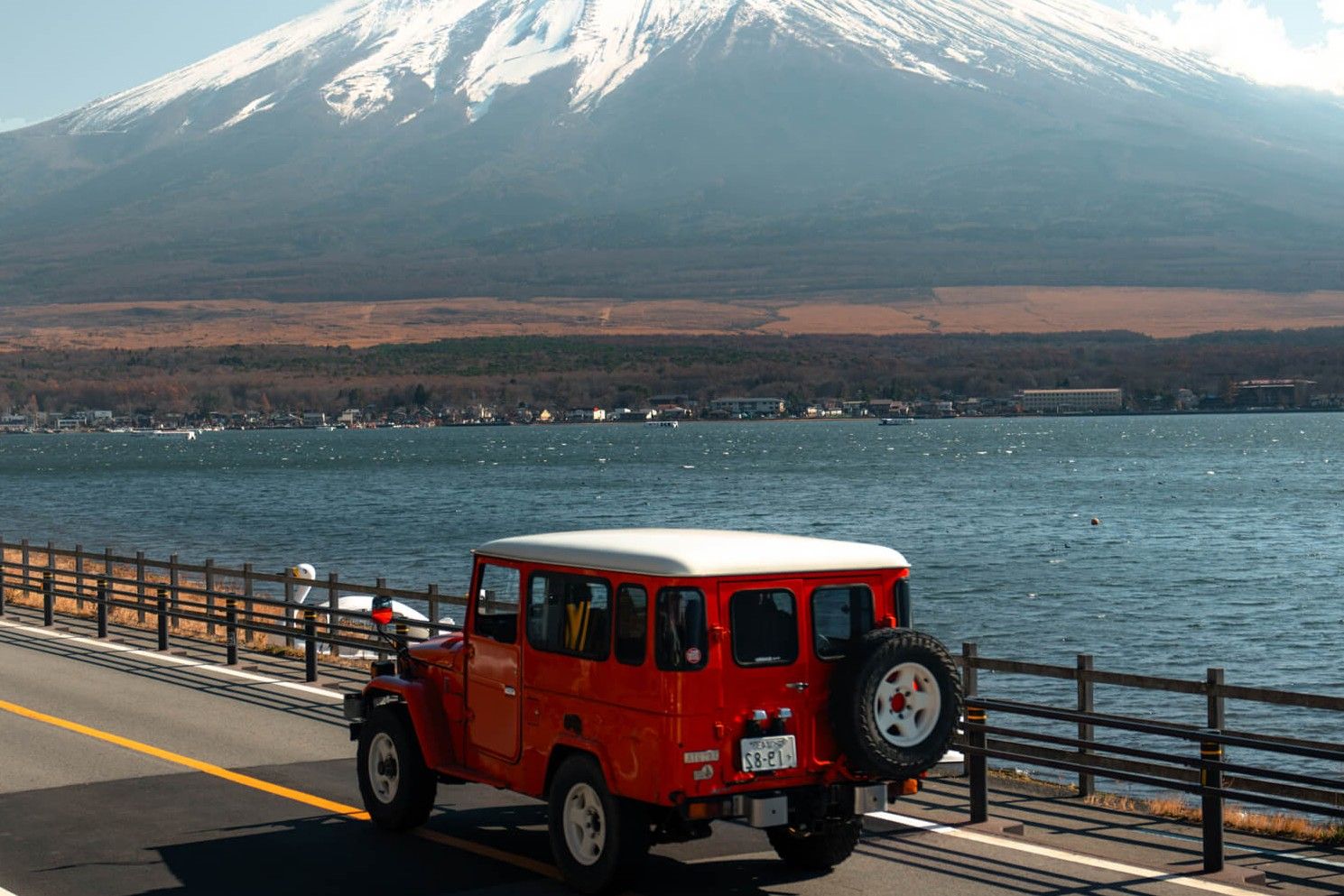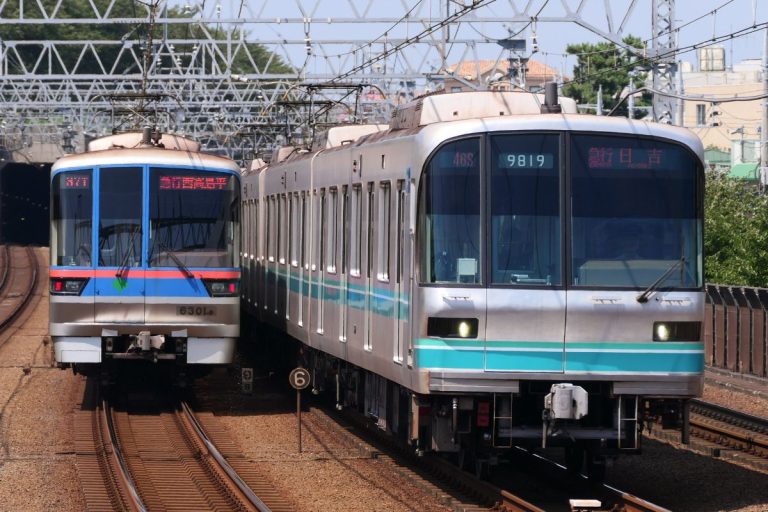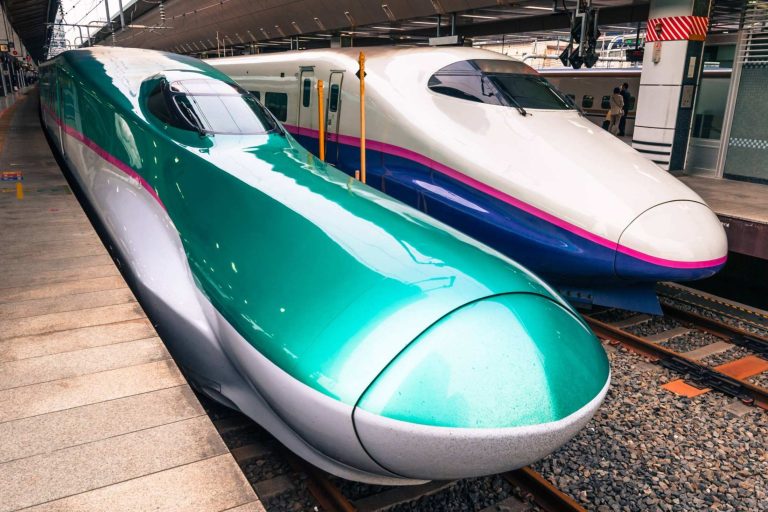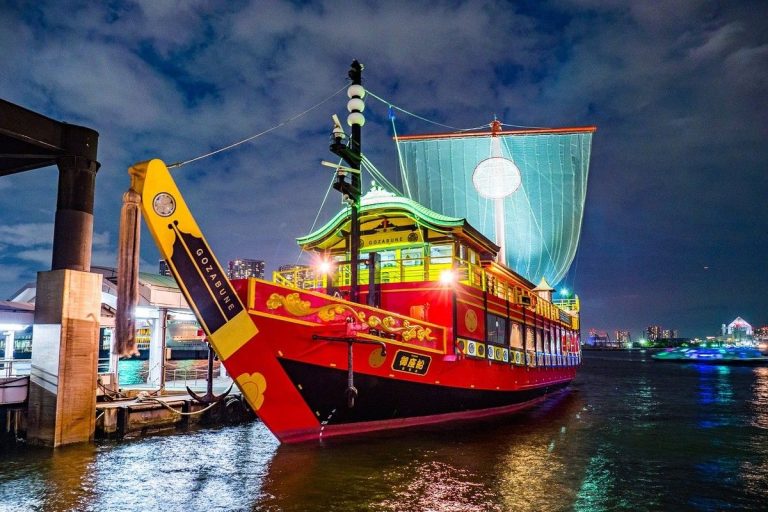Overview of Car Rental in Japan
Renting a car in Japan opens up incredible opportunities to experience the country beyond the well-traveled tourist paths. While Japan’s public transportation system is world-renowned for its efficiency and coverage, there are numerous situations where having your own wheels becomes invaluable. The freedom to stop at hidden temples, scenic viewpoints, and local restaurants that aren’t accessible by train creates memories that structured tours simply can’t match.
The car rental industry in Japan is well-developed and tourist-friendly, with most major companies offering English-language services and support. Understanding when and how to rent a car can transform your Japanese adventure from a standard itinerary into a personalized journey of discovery.
Why Rent a Car?
Car rental becomes particularly valuable when venturing into Japan’s stunning countryside and mountainous regions. Rural areas often have limited public transportation options, with some train lines running only every 30 minutes during peak hours from 7am to 11am. This restricted schedule can severely limit your ability to fully experience destinations like the Japanese Alps, remote hot spring towns, or coastal fishing villages. Having a car allows you to travel at your own pace and access locations that would otherwise require multiple transfers and lengthy waits.
When Car Rental is Recommended
Certain travel scenarios make car rental almost essential for a fulfilling experience. Multi-destination trips within a specific region, such as touring Hokkaido’s flower fields or exploring Kyushu’s volcanic landscapes, become much more manageable with a rental car. Winter sports enthusiasts heading to ski resorts will find cars invaluable, as many resorts are located in areas with limited public transport. Additionally, travelers with mobility concerns or those traveling with young children often find the convenience and comfort of a private vehicle worth the additional cost.
Who Can Rent a Car?
Drivers must be at least 18 years old to rent a car in Japan, which is younger than many other countries’ requirements. However, having the legal age is just the starting point. You’ll need either a valid International Driving Permit based on the 1949 Geneva Convention or, for citizens of specific countries including Germany, France, Belgium, Monaco, Switzerland, and Taiwan, an official Japanese translation of your home country license along with the original license.
Major Car Rental Companies
Japan’s car rental market is dominated by several reliable companies that cater to international visitors. Toyota Rentacar leads the market with extensive coverage and English-speaking staff at major locations. Nippon Rentacar and Orix Rentacar also maintain strong networks throughout the country. Times Car Rental has grown significantly in recent years, offering competitive rates and modern fleets. International brands like Budget and Hertz operate in Japan through partnerships with local companies, providing familiar service standards for overseas visitors.
Cost of Renting a Car
Daily rental rates typically start around 5,000 to 7,500 yen for compact cars, making them surprisingly affordable for budget-conscious travelers. Mid-size vehicles range from 8,000 to 15,000 yen per day, while larger vehicles and luxury cars can cost 20,000 to 31,000 yen daily. These base rates often include basic insurance coverage, but additional protection options are available for peace of mind.
Driving Requirements
Navigating Japan’s driving requirements requires careful preparation before your trip. The country maintains strict standards for foreign drivers, and failing to meet these requirements can result in being unable to rent a vehicle upon arrival. Understanding these prerequisites ensures a smooth start to your driving adventure in Japan.
The documentation process varies significantly depending on your country of origin, with some nations having special bilateral agreements that streamline the process. Regardless of your nationality, obtaining the proper documentation in your home country is essential, as these documents cannot be acquired once you’re already in Japan.
Age Restrictions
Japan sets the minimum driving age at 18 years old, which applies to both domestic and international drivers. This relatively low age requirement makes car rental accessible to younger travelers who might not be able to rent vehicles in other countries. However, some rental companies may impose their own higher age restrictions or require additional fees for drivers under 21. It’s worth noting that there’s no maximum age limit for driving in Japan, though some companies may require additional documentation or medical certificates for elderly drivers.
Driver’s License Requirements
The International Driving Permit remains the most common way for foreign visitors to legally drive in Japan. This document must be issued in your home country before departure and is valid for up to one year from the date of issue. The permit must be based on the 1949 Geneva Convention, as Japan doesn’t recognize permits issued under the 1968 Vienna Convention. Citizens of Germany, France, Belgium, Monaco, Switzerland, and Taiwan can alternatively use their domestic licenses with an official Japanese translation, which must be obtained through their country’s automobile association or embassy.
Insurance Considerations
Mandatory insurance coverage is included in all rental agreements, but the basic coverage may not provide comprehensive protection. Most rental companies offer additional insurance packages that reduce or eliminate deductibles and provide broader coverage for damages. Collision Damage Waiver and theft protection are commonly available upgrades that many experienced travelers recommend. Some international travel insurance policies include rental car coverage, so checking your existing coverage before purchasing additional protection can save money.
Costs Involved
Understanding the full cost structure of car rental in Japan helps travelers budget effectively and avoid unexpected expenses. While daily rental rates provide a baseline, additional fees and ongoing costs like fuel and parking can significantly impact your total transportation budget. Smart planning and awareness of these costs can help you make informed decisions about when and where to use your rental car.
Transparency in pricing varies among rental companies, with some including more services in their base rates while others charge separately for each additional service. Comparing total costs rather than just daily rates provides a more accurate picture of your actual expenses.
Daily Rental Rates
Compact cars represent the most economical option, typically costing between 5,000 and 7,500 yen per day during standard periods. These vehicles are perfect for navigating Japan’s often narrow roads and provide excellent fuel economy. Mid-size cars, offering more comfort and luggage space, generally range from 8,000 to 15,000 yen daily. Luxury vehicles and larger SUVs can cost 20,000 to 31,000 yen per day, but may be worthwhile for families or groups traveling together. Seasonal demand significantly affects pricing, with rates increasing during Golden Week, summer holidays, and cherry blossom season.
Additional Fees
Drop-off fees can substantially increase costs if you plan to return your car at a different location from where you picked it up. Local drop-offs within the same city typically incur modest fees, but returning a car in a different prefecture can cost several thousand yen. Navigation system upgrades for English-language GPS may cost an additional 500 to 1,000 yen per day. Child seats, snow chains, and other accessories typically rent for 500 to 1,500 yen daily. Some companies charge cleaning fees if the vehicle is returned excessively dirty.
Fuel Costs
Gasoline in Japan costs approximately 170 to 180 yen per liter, which translates to roughly 650 to 680 yen per gallon. Most rental cars use regular unleaded gasoline, though some larger vehicles may require premium fuel. Full-service gas stations are common and provide assistance with fueling, which can be helpful for travelers unfamiliar with Japanese gas stations. Self-service stations offer slightly lower prices but require basic Japanese language skills or the assistance of attendants. Most rental agreements require returning the car with a full tank, and some companies require proof of recent fueling.
Car Features and Navigation
Modern rental cars in Japan come equipped with advanced features that make driving more comfortable and navigation more manageable for international visitors. Understanding these systems before you start driving can significantly improve your experience and help you make the most of your rental car’s capabilities.
Technology integration in Japanese rental cars often surpasses what travelers might expect, with even basic models featuring sophisticated navigation and safety systems. Taking time to familiarize yourself with these features can transform a potentially stressful driving experience into an enjoyable part of your journey.
GPS and Navigation Systems
Most rental cars include GPS navigation systems, with many offering English-language displays and voice guidance. These systems are typically pre-loaded with comprehensive maps of Japan, including points of interest, restaurants, and tourist attractions. However, the interface and functionality can vary significantly between manufacturers and models. Some systems allow destination input via phone number, which is often the easiest method when visiting specific businesses or attractions. Having a backup navigation method, such as a smartphone app or physical map, provides additional security for travelers venturing into remote areas.
Child Seats and Snow Tires
Child safety seats are available for rent from all major car rental companies, with options for different age groups and sizes. Japanese law requires appropriate restraint systems for children, and rental companies typically stock seats meeting local safety standards. Snow tires are automatically provided during winter months in regions where snow is expected, typically from November through March. These specialized tires significantly improve safety and are mandatory in many mountainous areas during winter. Some rental locations also provide snow chains as additional equipment for extreme weather conditions.
Parking and Fueling in Japan
Parking and fueling logistics can make or break your car rental experience in Japan. Understanding where and how to park legally, as well as navigating the fuel system, prevents costly mistakes and reduces stress during your travels. These practical considerations become particularly important in urban areas where parking violations can result in significant fines and complications.
The parking infrastructure in Japan reflects the country’s space constraints and urban density, resulting in innovative solutions that might seem unusual to international visitors. Learning to recognize and use these systems effectively is essential for successful car rental experiences.
Parking in Urban Areas
Urban parking in Japan is expensive and often challenging to find, with rates in central Tokyo reaching 300 to 600 yen per hour. Mechanical parking towers and elevator parking systems are common space-saving solutions that require careful maneuvering to use safely. Many parking lots use automated payment systems that accept coins and bills but may not accept credit cards. Time limits are strictly enforced, and overstaying can result in additional fees or complications. Department stores and shopping centers often provide temporary free parking for customers, but validation requirements vary by location.
Parking in Rural Areas
Rural and small-town parking presents a completely different scenario, with many locations offering free parking at tourist attractions, restaurants, and accommodations. Mountain areas and national parks typically provide designated parking areas, though popular destinations can fill up quickly during peak seasons. Beach areas and scenic viewpoints often have informal parking areas, but care must be taken to avoid blocking local traffic or private property. Some rural attractions charge modest parking fees, usually ranging from 300 to 500 yen for the entire day.
Refueling Your Rental Car
Gas stations in Japan operate differently from many other countries, with full-service options being more common than in Western nations. Attendants at full-service stations will fill your tank, clean your windshield, and handle payment, making the process straightforward for international visitors. Self-service stations offer lower prices but require basic understanding of the pumps and payment systems. Most stations accept cash and credit cards, though some rural locations may be cash-only. Proof of recent fueling may be required when returning your rental car, so keeping your receipt is advisable.
Driving Conditions
Japan’s driving conditions vary dramatically depending on location, season, and time of day. Understanding these variations helps travelers prepare appropriately and drive safely throughout their journey. The country’s excellent road infrastructure generally provides smooth driving experiences, but specific challenges require awareness and preparation.
Weather patterns, local driving customs, and infrastructure differences can significantly impact your driving experience. Being prepared for these variations ensures both safety and enjoyment during your travels.
Weather Considerations
Japan’s diverse climate creates varying driving conditions throughout the year and across different regions. Winter driving in northern areas and mountainous regions requires snow tires and chains, which rental companies provide automatically during appropriate seasons. Summer brings heavy rainfall during the rainy season, creating challenging visibility and road conditions. Typhoon season can bring severe weather that makes driving dangerous or impossible, so monitoring weather forecasts becomes essential during late summer and early fall. Spring and fall generally offer the most pleasant driving conditions, though spring can bring sudden weather changes in mountainous areas.
Road Signage and Language
Major highways and arterial roads feature bilingual signage with both Japanese and English text, making navigation relatively straightforward for international drivers. However, rural areas and local roads often have Japanese-only signage, making a GPS system or translation app essential. Road signs follow international conventions for basic symbols, so stop signs, speed limits, and directional indicators remain recognizable. Having a Japanese-English road atlas provides backup navigation assistance and helps with understanding local place names and geographical features.
Safety Tips for Driving
Japanese drivers generally follow traffic rules strictly and drive courteously, creating a relatively safe driving environment. However, narrow roads in urban areas and mountainous regions require extra caution and slower speeds. Pedestrians and cyclists share many roads, particularly in residential areas, so constant vigilance is necessary. Emergency contact information should be easily accessible, including your rental company’s 24-hour assistance number and local emergency services. Keeping your International Driving Permit, passport, and rental agreement readily available helps resolve any issues quickly if stopped by police.
Alternatives to Car Rental
While car rental offers flexibility and convenience, Japan’s exceptional public transportation system provides viable alternatives that may be more suitable for certain types of travel. Understanding when to choose public transport over car rental can save money and reduce stress, particularly in urban areas where driving can be challenging and expensive.
The decision between car rental and public transportation often depends on your specific itinerary, travel style, and budget considerations. Many successful Japan trips combine both transportation methods strategically to maximize convenience and minimize costs.
When to Use Public Transportation
Public transportation becomes the clear winner when traveling between major cities or exploring urban areas extensively. The Tokyo subway guide reveals an intricate network that efficiently connects virtually every corner of the metropolitan area, making car rental unnecessary for city-based itineraries. JR East train passes provide economical access to multiple destinations across eastern Japan, often at costs lower than car rental when factoring in fuel and parking expenses. The Tokyo Monorail travel system offers convenient airport connections that eliminate the need for rental car pickup and drop-off logistics.
Cost-Effectiveness of Public Transport
For travelers focusing primarily on major cities and popular tourist destinations, public transportation often provides better value than car rental. Multi-day rail passes can cost less than a single day’s car rental when including fuel and parking fees. Urban areas like Tokyo have such expensive parking that even short visits to attractions can cost more than equivalent train fares. Tokyo taxi services provide door-to-door convenience for specific situations without the ongoing costs and responsibilities of car rental.
Combining Car Rental with Public Transport
Many experienced travelers use a hybrid approach, relying on public transportation for urban exploration and renting cars specifically for rural adventures. This strategy maximizes the benefits of both transportation methods while minimizing their respective drawbacks. For example, you might use trains to travel between Tokyo and Kyoto, then rent a car specifically for exploring the Japanese Alps or rural hot spring areas. Some travelers even incorporate Tokyo Bay ferry cruises or bicycle rental and recommended cycling routes to create diverse transportation experiences that match different aspects of their itinerary.
Personal Experiences and Insights
Real-world experiences from travelers who have rented cars in Japan provide valuable insights that go beyond official guidelines and company policies. These personal accounts highlight both the rewards and challenges of driving in Japan, offering practical wisdom that can help future travelers make informed decisions and prepare effectively.
Learning from others’ experiences helps set realistic expectations and provides solutions to common problems that might not be obvious from reading official information alone.
Flexibility and Convenience
Travelers consistently praise the freedom that car rental provides for exploring Japan’s hidden gems and off-the-beaten-path destinations. The ability to stop spontaneously at roadside restaurants, scenic overlooks, and small shrines creates memorable experiences that structured tours cannot match. Many visitors discover that having a car transforms their relationship with the Japanese landscape, allowing them to appreciate the country’s natural beauty and rural culture more deeply. The convenience of carrying luggage, shopping purchases, and travel supplies without worrying about weight limits or storage space significantly enhances the travel experience.
Challenges Faced by Travelers
Common challenges include navigating narrow urban streets, understanding parking regulations, and communicating at gas stations in rural areas. Many travelers underestimate the stress of driving in unfamiliar territory, particularly when dealing with complex highway interchanges around major cities. Language barriers can create difficulties when seeking assistance or dealing with unexpected situations like minor accidents or traffic violations. Some visitors find that the combination of jet lag and driving on the left side of the road creates more fatigue than anticipated, requiring additional rest stops and conservative driving schedules.
Tips from Experienced Renters
Seasoned car rental users recommend downloading offline maps and translation apps before departure, as cellular coverage can be spotty in mountainous areas. Many suggest practicing with the GPS system and car controls before leaving the rental lot, as Japanese vehicles may have different control layouts than familiar models. Experienced travelers emphasize the importance of understanding your insurance coverage thoroughly and taking detailed photos of the vehicle before departure. Planning routes with extra time for navigation challenges and unexpected discoveries leads to more enjoyable and less stressful driving experiences.
Frequently Asked Questions
What is the minimum age to rent a car in Japan?
The minimum age to rent a car in Japan is 18 years old.
Do I need an International Driving Permit to drive in Japan?
Yes, you need a valid International Driving Permit based on the 1949 Geneva Convention or an official Japanese translation of your home country’s license, depending on your nationality.
What are the typical costs associated with renting a car in Japan?
Daily rental rates for compact cars start around 5,000 to 7,500 yen, while mid-size vehicles range from 8,000 to 15,000 yen. Additional costs may include fuel, parking fees, and optional insurance.
Is public transportation better than renting a car in Japan?
For urban travel and between major cities, public transportation is often more cost-effective and convenient. However, renting a car is recommended for exploring rural areas with limited public transport options.
What should I know about parking in Japan?
Urban parking can be expensive and hard to find, while rural areas often have free parking. It’s important to familiarize yourself with local parking regulations to avoid fines.
Embarking on a Journey Through Japan’s Roads
Navigating Japan by car offers a unique opportunity to uncover hidden treasures and enjoy the country’s stunning landscapes at your own pace. With the right preparation, understanding of local requirements, and practical tips, your driving adventure can lead to unforgettable experiences and a deeper appreciation for the beauty and culture of Japan.




